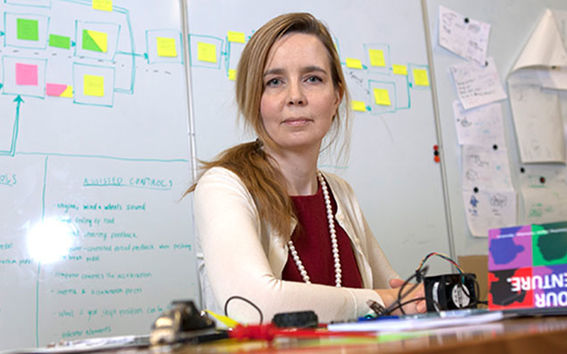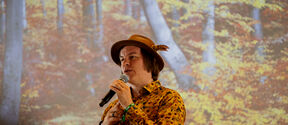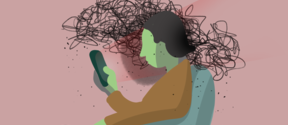Creativity can be taught, says Katja Hölttä-Otto, Professor of Product Development

This subject has also been studied at several technological universities.
‘It is definitely possible to teach creativity,’ says Associate Professor of Product Development Katja Hölttä-Otto from the Department of Mechanical Engineering.
‘According to the studies, if the education provided is product development-oriented and product design-oriented, students are more creative when they graduate than they were when they began their studies.
Many different methods can be used to improve creativity and the capacity to generate ideas. One of the most traditional ones is brainstorming, but in reality there are as many as a few hundred methods.
‘Any creative method is better than no method at all,’ says Hölttä-Otto.
It is especially self-criticism that hinders creative thinking. Self-criticism can be defeated, for example, by forcing oneself to create more and more new ideas at a fast pace.
‘A certain kind of creative environment and having fun free our thinking. Breaks are good. It is also possible to break the chains by asking different questions: what if something were actually the other way round, what if the moving part were stationery, what if you removed the problem? We can also look for analogies in nature,’ Hölttä-Otto says.
From idea to product
In addition to creativity, Hölttä-Otto and her colleagues teach all the different stages of product development from generating ideas to design integration. The user of the product and the suitability of the product for assembling and production are taken into consideration when designing it.
The subjects taught also include modular product development, which was the subject Hölttä-Otto wrote her doctoral dissertation on at the time. The aim of modular product development is to design a product that can easily be modified according to the customer’s wishes and needs.
Hölttä-Otto says that products can always be improved. The faults are usually related to the usability of the product.
‘Designers design for people who are too much like themselves, when they should be thinking about the customer, either the consumer or the corporate customers. You notice interesting points of view when you think about users as groups at extreme ends, such as elderly people or children.
Designing is teamwork
A separate selection of courses has been designed for the students of each major in master’s programmes at the Department of Engineering Design and Production. Some of the courses are compulsory, others optional. About 80 students have enrolled on Hölttä-Otto’s courses.
The design principles that apply in the exercises are the same that apply in the world of business. The starting point given is usually a problem that needs to be solved.
‘You have to constantly keep checking how good your idea is. As the design process progresses, the next thing is to try to make a prototype as quickly and cheaply as possible and give it to customers to test. The decisions on the continuation of product development will be made on the basis of those tests.
Hölttä-Otto wanted to have her room at Design Factory to be able to be in touch with students from different fields. She does not like silo mentality, according to which people only carry out work related to their own fields.
‘Product development is most successful when people from many different fields participate in it. For example, a psychologist may provide valuable ideas for the product development process. A psychologist understands human behaviour and, as we know, products are often designed for people.’
In Hölttä-Otto’s opinion it is great that Aalto University combines the teaching of technology, business and arts. It lays a good foundation for creativity to flourish on.
‘However, there is still a lot to do in trying to combine the creative powers. Boundaries between departments should be dismantled in teaching and studying product development.
Before her appointment as an Associate Professor at Aalto University Hölttä-Otto was teaching product development at university in Singapore and the USA for years and had excellent experiences of work of design teams made up of students from different fields. Now she applies the ideas of creativity and product development with students of Aalto University.
Read more news

Postdoctoral researcher Eloi Moliner makes history as a 5-time award winner
Eloi Moliner is one of the most decorated doctoral researchers in Aalto University's history – we would like to highlight his success and contributions to the field of audio signal processing
2 million euro donation to Aalto University's new multidisciplinary Bachelor’s programme – Donors: Matti Alahuhta, Sari Baldauf, Antti Herlin, and Jorma Ollila
Set to launch in autumn 2027, the multidisciplinary Bachelor's programme combines technology, business, arts, and design
Having autonomy in your life is more important in wealthier countries, says new research on well-being
A worldwide analysis reveals a nuanced relationship between happiness, volition and wealth.






